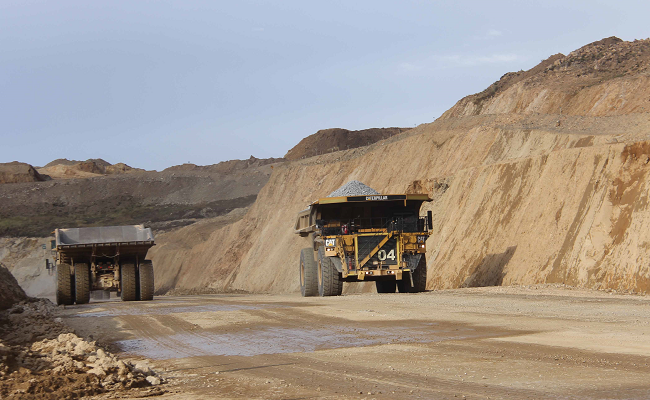Moody’s: Peru attracts mining investment due to its competitive costs
He said that although transitory shocks have been seen in the prices of raw materials, and the most sensitive is the price of copper, which came down to 2.50 dollars per pound, Peru has advantages to attract capital in this sector.
“The favorable thing that Peru has is that its mines, especially in copper are quite competitive, the cash-cost of operating them is quite low, and even with relatively moderate prices of commodities you can operate with profits and this generates taxes and income. prosecutors”, he said.
The copper came to be quoted at an average of 4 dollars per pound in 2011, in 2016 it dropped to 2.20 dollars, in 2017 it stood at 2.79 dollars. In January of this year, it averaged 3.21 dollars and in August it dropped to 2.73 dollars, according to statistics from the Ministry of Energy and Mines.
“These commodity prices, although not as high as we saw a few months ago, still help and are favorable for performance and tax revenues”, Reusche stressed.
He also indicated that the current price of copper is slightly below what its fundamentals would suggest.
“The problem is that if this price level persists, it becomes a new anchor and becomes the new level of equilibrium. However, we do see that demand continues to increase, and this should bolster the price of copper and metals, in general, a bit more”, he said.
He said that the trade wars and the slowdown in China are “holding up” the price of copper, and considered it difficult to predict the next steps that the United States will take because the White House follows unorthodox policies.
“I think we have seen the worst, in any case, the following measures that the United States can take in terms of trade issues are going to be complementary”, he said.
Investment in exploration
On the other hand, he pointed out that mining investment in exploration in Peru is not taking place in an important way.
“This year we are hardly going to reach 500 million dollars, a little less than last year, but the projects that are already are relatively large and the issue is that they can move forward,” he said.
He also indicated that he perceives a more favorable push for mining investment because both the public sector and companies “have learned” that the dialogue and communication that affect the mines is very important.
“You can only move forward mining projects lowering social conflict so that you no longer have Congas or Tías Marías. Now projects are delayed, but they are of better quality and more resilient in the face of this social conflict, “he said.
On the other hand, said that while some regions of the country with mining activity now have new regional authorities with radical political biases, more important is the role played by the Central Government and the Presidency of the Council of Ministers (PCM).
“The important thing beyond the cut of the local authorities is how you design the project and if you can return to the local communities in stakeholders (participants) and give them some ownership (property) that benefits them”, he said.
The total mining investment in 2013 reached a peak of 8,863 million dollars, in 2016 it stood at 3,333 million dollars, and in 2017 it increased to 3,928 million dollars.
Between January and August of this year the total mining investment totals 2,750 million 576,117 dollars, an amount greater by 25.22% in the same period of 2017 (2,196 million 667,221 dollars), according to statistics from the Ministry of Energy and Mines.




